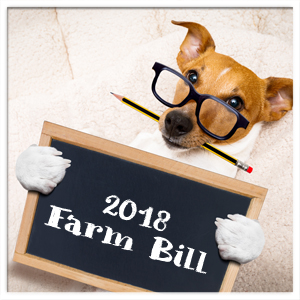Hemp Derived CBD: Why It’s Legal
The cannabis plant has had a long, strange, and ultimately arbitrary regulatory history. Until 2018, hemp was classified as a Schedule 1 narcotic under the Controlled Substances Act. This was because the Drug Enforcement Agency (DEA) did not differentiate between strains of Cannabis sativa L. which have less than 0.3% of the psychoactive compound delta-9-tetrahydrocannabinol (THC), and those with more than 0.3% THC. Such a distinction is important as the 2018 Farm Bill removed any Cannabis sativa L. plant and its derivatives which contain less than 0.3% THC from the CSA, redefining these plants as hemp. Any Cannabis plant containing >0.3% THC is referred to as marijuana which currently remains as a Schedule 1 drug, those drugs having, “no currently accepted medical use in the United States, a lack of accepted safety for use under medical supervision, and a high potential for abuse,” according to the DEA.
Enactment of the 2018 Hemp Farm Bill, resulted in regulation of hemp being relinquished by the DEA, to the FDA, who’s functionality of enforcement is public safety rather than the pursuit of criminal convictions. The explosion of public cannabidiol (CBD) use and pressure from public outcry, resulted in the FDA and US lawmakers being forced into action. When backed by mounds of anecdotal and scientific evidence, and significant financial and political pressure, regulatory agencies had no choice but to realize hemp and its derivatives are an important crop for American farmers and consumers.
The 2018 Farm Bill has explicitly preserved the FDA’s authority over hemp products, which is in the best interest of public safety. This part of the regulation is key because, prior to the 2018 Farm Bill, the use and regulation of CBD products and hemp was left up to state legislation. The DEA, however, was still making arrests despite state laws because it was still a federal crime and they had the authority to do so. This left a confusing and contradicting atmosphere within the regulations and hemp farming/manufacturing community.
The FDA has now vowed “…to treat these products just like we do any other. FDA is committed to advancing hemp products through the Agency’s existing regulatory pathways, and we are further exploring whether it would be appropriate to make additional regulatory pathways available to hemp products such as those containing cannabidiol (CBD). FDA believes taking this approach protects patients and the public health, fosters innovation for safe and appropriate products, and promotes consumer confidence.” This is a huge and fantastic leap in progress for hemp regulation — from a schedule 1 narcotic to a FDA regulated consumer product — as it helps ensure a better product for the consumer, which in our case happens to have four legs and lots of fur.
Canna Companion is devoted to regulatory compliance and public safety within the new framework of hemp legislation. We believe that transparency and current good manufacturing practices (cGMPs) delegated by the FDA are key to the progression of hemp based laws. Canna Companion works closely with the National Animal Supplement Council (NASC) , who maintains open channels with the FDA’s Center for Veterinary Medicine (CVM) regarding hemp legislation. This helps ensure we are always up to date with new changes in policy, usually before they reach the general public.
The NASC continually monitors its members, collecting data from companies who supply hemp products for animals. They released an ingredient risk report for hemp and hemp based compounds from 10 years of data which shows 34 million applications of hemp products to dogs, cats, and horses with only 10 adverse events, and none of them serious enough to prompt a recall. This data is hugely important and is being used as an example of the safety of hemp products when produced under FDA guidelines. Canna Companion is proud to have assisted in their data collection efforts, setting an example of what hemp companies should be doing in order to provide transparent data and a quality product to consumers.






